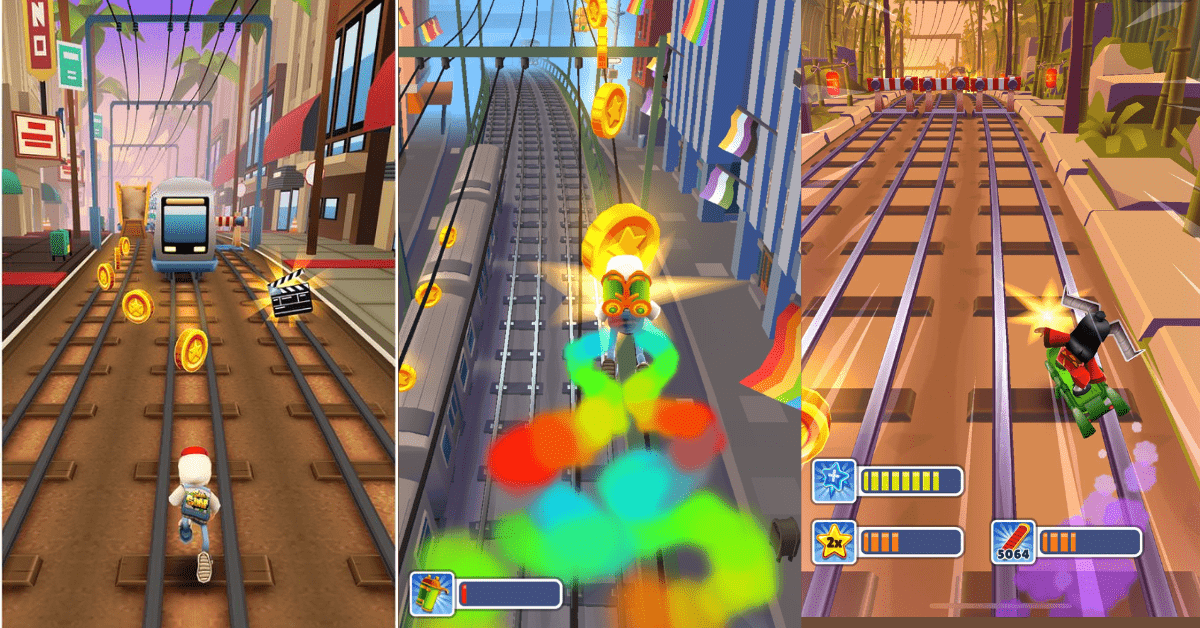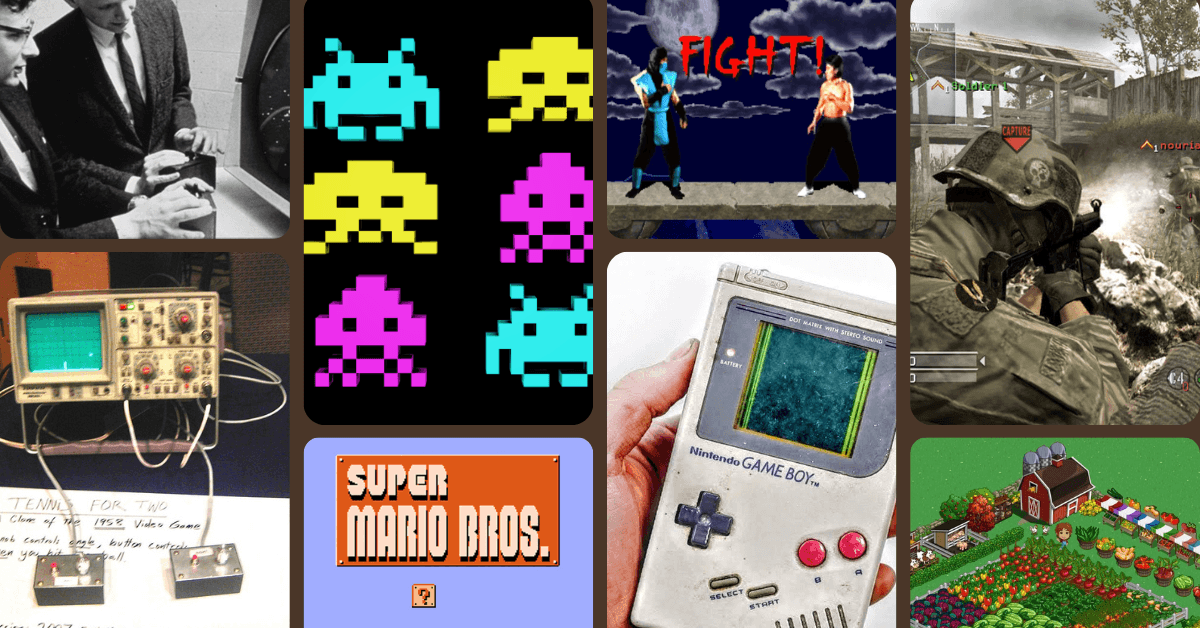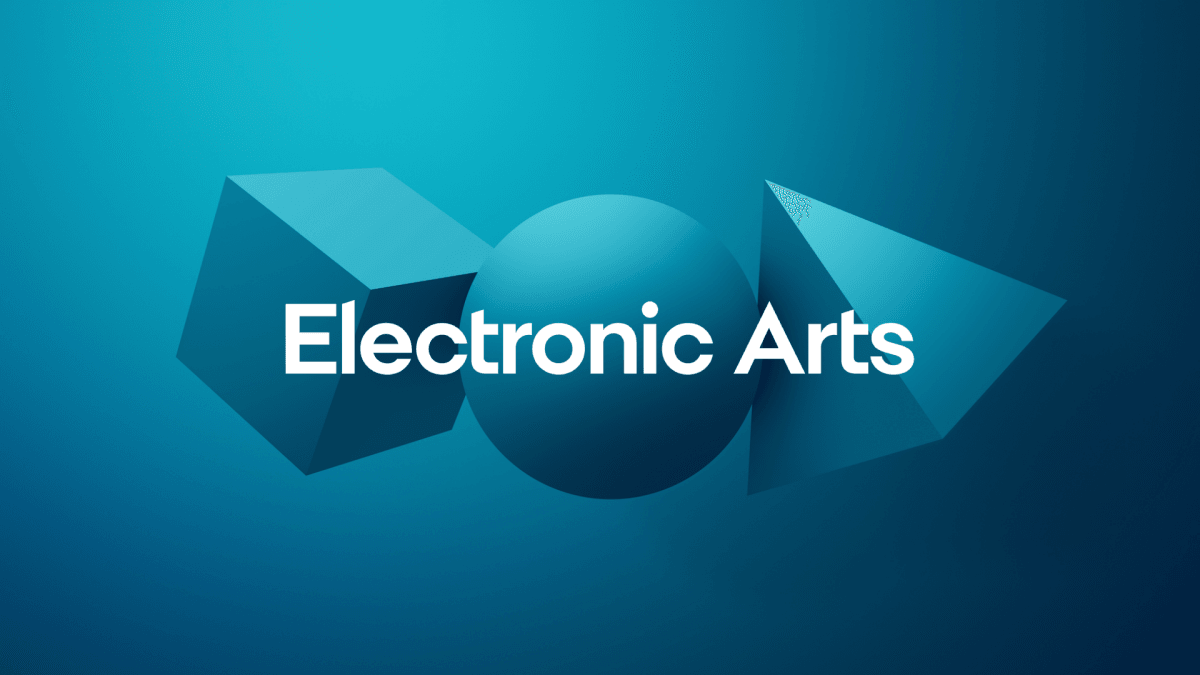The Japanese gaming market is one of the most profitable and most misunderstood markets in the world.
Despite making up just a small share of global players, Japan consistently ranks in the top three for gaming revenue. But winning here isn’t as simple as dropping a hit global title and hoping for the best. Japanese players have unique tastes, distinct platform preferences, and a deep loyalty to domestic franchises.
In this article, we break down the latest data on platform performance, revenue and gaming trends, genre preferences, and top-performing franchises across mobile, PC, and console.
Whether you’re planning a launch, sizing up the gaming industry in Japan, or looking to better localize your game, this is your cheat sheet to what’s working – and what’s not �– in Japan.
Japanese Gaming Market: Big Revenue, Especially on Mobile and Console
Japan ranks #3 globally in overall game revenue, contributing 9.1% of global gaming spend, with just 2.2% of the global player base. That’s already a strong indicator of high monetization per player.

But when we break it down by platform, things get even more interesting:
- Console: Japan is the #2 global market, making up 8.0% of global console revenue and 6.2% of console players. That’s a more balanced ratio and highlights Japan’s deep roots in console gaming.
- Mobile: Japan ranks #3, contributing a massive 11.5% of mobile game revenue, with just 2.0% of global mobile players. This is the biggest gap of any segment and shows just how valuable Japanese mobile users are.
- PC: Japan comes in at #4, with 4.1% of PC game revenue and 2.9% of PC players. It’s the smallest segment, but still shows decent engagement.
Key takeaway: The Japanese gaming market punches far above its weight in both mobile and console revenue. For developers and publishers, it’s a high-ARPU market where quality, polish, and local preferences matter more than sheer user volume.

Japanese Gaming Market Revenue Breakdown by Platform
In 2024, the Japanese gaming market generated $16.6B, with mobile making up the bulk at 69%. Console accounted for 21%, while PC held a 10% share.
However, performance varied by platform:
- PC gaming was the only segment to grow, up +7.8% YoY in USD and an even stronger +16.2% YoY in local currency.
- Console revenue dropped sharply, falling -10.1% YoY in USD, largely due to the Nintendo Switch nearing the end of its lifecycle.
- Mobile gaming dipped -2.4% YoY in USD but still posted modest local growth, showing resilience in player spending despite currency headwinds.
Key takeaway: Currency fluctuations masked real growth. The Japanese gaming market grew in yen terms, especially in PC and mobile, but appeared flat or negative in USD.

PC Gaming Has Driven Growth in the Japanese Gaming Market Since 2018
Between 2015 and 2018, both PC and console revenues in the Japanese gaming market were mostly flat. But starting in 2018, PC gaming took off.
- From 2018 to 2021, PC software revenue grew at a +12% CAGR, while console rose just +5.3%.
- From 2021 to 2024, PC accelerated even more with +21.4% CAGR, while console slowed to +1.7%.
- Looking ahead to 2024–2027, console is projected to slightly outpace PC at +6.3% CAGR vs. +5.1%.
Key takeaway: PC gaming has been the primary growth engine of the Japanese gaming market for the past 7 years. But with new console cycles on the horizon, we may see a shift in momentum starting in 2024.

Currency Depreciation Distorts the USD View
While local currency data showed consistent growth, the USD view tells a different story for the Japanese gaming market.
- From 2021 to 2024, PC gaming still grew at +9.1% CAGR, but console revenue dropped -8.7% due to the yen’s decline.
- From 2018 to 2021, both segments grew strongly in USD, mirroring local trends.
- Forecasts for 2024–2027 show steady recovery: +5.1% CAGR for PC and +6.3% for console.
Key takeaway: The Japanese gaming market didn’t shrink – the yen did. Looking only at USD data hides the real momentum, especially in console and PC.

Nintendo Dominates the Console Space
As of December 2024, Nintendo Switch accounts for 70% of all console units sold in Japan, with 35 million units out of a total 50.1 million.
- PlayStation follows at 29%, or 14.4 million units.
- Xbox barely registers, holding just 1% share with 760,000 units sold.
Key takeaway: The Japanese gaming market is still heavily Nintendo-first. For developers targeting consoles, prioritizing Switch makes the most sense for reach, though PlayStation also offers a meaningful base. Xbox, however, remains a non-factor.
Genre and Theme Preferences in the Japanese Gaming Market
Understanding what genres and themes resonate with Japanese players is essential when planning game launches, content updates, or licensing strategies. Preferences differ sharply by platform, and they don’t always align with Western trends.

Console
When it comes to console gaming in the Japanese gaming market, Role-Playing Games (RPGs) dominate, with 43% of players engaging with the genre, more than double the rate in the UK.
This isn’t surprising given the long-standing success of series like Final Fantasy, Dragon Quest, and Persona, all of which have deep roots in Japanese gaming culture.
Battle Royale comes next at 35%, followed by Shooters at 32%, which still trail far behind the UK’s 52% shooter preference. This suggests that while global titles like Call of Duty or Apex Legends are present, they don’t command the same dominance in Japan.
On the flip side, genres like Sports, Sandbox, and Adventure are significantly more popular in the UK than in Japan, highlighting the narrower focus of Japanese console players.
As for themes, Fantasy is by far the most preferred, favored by 47% of console players in Japan. This aligns with the RPG preference and reflects strong demand for lore-rich, imaginative worlds. Other notable themes include Science Fiction (34%) and Survival (29%), with Mystery (25%) also seeing strong interest.
By contrast, Post-apocalyptic, Sandbox, and Sports themes have minimal appeal in Japan compared to the UK. This shows that Japanese console gamers tend to gravitate toward structured, narrative-driven experiences over open-ended or competitive ones.

PC
On PC, Japanese players show a broader genre appetite compared to console. While Shooters remain dominant at 69%, closely aligned with the UK’s 66%, other genres like Adventure (43%) and Role-Playing (40%) also maintain a strong presence.
What stands out most, though, is Japan’s high engagement with Battle Arena games (29%), far above the UK’s 8%. MOBAs like League of Legends and Dota 2 may not be homegrown, but their competitive format has carved out a loyal niche among Japanese PC users. Battle Royale titles (21%) are also more popular in Japan on PC than in the UK.
Genres such as Simulation, Strategy, and Sandbox remain less popular among Japanese PC players, indicating a preference for fast-paced or narrative-driven gameplay over management-style experiences.
When looking at themes, Fantasy again leads at 43%, which aligns with both RPG and shooter content that blends in imaginative or stylized worlds. Other strong themes include Science Fiction (32%), Mystery (26%), and Survival (23%).
Interestingly, Japanese players are less drawn to Post-apocalyptic, Horror, and Survival themes compared to their UK counterparts, suggesting less appetite for dark, gritty settings and more interest in immersive or narrative-heavy experiences.

Mobile
In the mobile segment of the Japanese gaming market, the data paints a very clear picture: Simulation and Role-Playing Games are the dominant genres by a wide margin.
- 47% of Japanese mobile players engage with Simulation games, compared to just 28% in the UK. This includes a wide range of titles – from character collection and life sims to social and idol management games.
- Role-Playing comes in second at 46%, another area where Japanese preferences sharply diverge from the West.
- Adventure (45%) and Shooter (40%) also show strong engagement, while genres like Puzzle, Arcade, and Card Battle see moderate but steady interest.
What’s also notable is that Battle Arena, which was a standout genre on PC in Japan, doesn’t see the same traction here. And genres like Sports and Sandbox, more common in the UK, remain niche in Japan’s mobile space.
In terms of themes, Fantasy leads again at 42%, continuing its dominance across platforms. Science Fiction (26%) and Mystery (23%) also perform well. However, Japanese mobile players show less interest in Survival, Horror, and Post-apocalyptic themes compared to the UK audience.

Top Console Franchises in the Japanese Gaming Market
When it comes to console gaming, Japanese players overwhelmingly prefer domestic franchises, especially those from Nintendo. The top three spots are held by Super Mario (#1), Pokémon (#2), and Splatoon (#3), cementing Nintendo’s cultural dominance in Japan.
- Super Mario continues to be a multi-generational powerhouse, supported by constant innovation and a wide variety of genres across its titles.
- Pokémon maintains strong momentum through its mainline games and spin-offs, particularly on the Switch.
- Splatoon, Nintendo’s competitive online shooter, has carved out a unique niche thanks to its local aesthetic, team-based gameplay, and regular updates.
Outside of Nintendo, Minecraft (#4) and Monster Hunter (#5) are the only non-Nintendo entries in the top five. Minecraft’s creative freedom and accessibility make it a global success, while Monster Hunter’s roots in Japanese development and its cooperative gameplay keep it highly relevant locally.
Final Fantasy (#6), Resident Evil (#8), and Gran Turismo (#9) further reflect the strength of homegrown IP, with Square Enix and Capcom continuing to play major roles in Japan’s console market.
Western franchises do break in – but just barely. Fortnite (#7) and Apex Legends (#10) are the only Western titles to make the top ten. Their presence highlights some demand for competitive shooters, but their lower rankings show they’re not driving the market.
Key takeaway: If you’re entering the Japanese console space, expect to compete in a market that heavily favors local franchises with deep brand heritage. Partnering with or building recognizable IP may be more effective than trying to displace entrenched favorites.

Top PC Franchises in the Japanese Gaming Market
On PC, Japanese players show a wider mix of local and global franchises compared to consoles.
Titles like Minecraft, Monster Hunter, Final Fantasy, and Resident Evil still reflect the strong presence of Japanese-developed IPs. But globally popular games like Fortnite, League of Legends, Apex Legends, Grand Theft Auto, and Star Wars also make the list – something we don’t see in the top console rankings.
Notably, Uma Musume Pretty Derby, a character-collection and racing sim based on anthropomorphized racehorses, makes the cut. It�’s a uniquely Japanese IP with limited global exposure, yet it holds its own against some of the world’s biggest franchises.
Takeaway: PC gaming in Japan offers more space for international titles to compete, especially in competitive and live-service genres. But domestic franchises still maintain a strong foothold, especially in narrative and RPG-heavy formats.

Free-to-Play Games in the Japanese Gaming Market
Free-to-play games remain a dominant force across both PC and console in the Japanese gaming market, especially in the PvP shooter category. But Japan also has some unique standouts that diverge from global trends.
PvP Shooters Lead the Charge
Globally successful shooters are widely played in Japan, with Apex Legends topping the list. It has the highest lifetime player base among free-to-play PC and console games (excluding Switch) in Japan. Titles like Fortnite, Rainbow Six: Siege, Overwatch, and Call of Duty: Modern Warfare also make the top 10.
This clearly shows a strong appetite for competitive shooters, even on platforms where Japan traditionally favors RPGs and narrative-driven content. Apex’s fast pace and hero-based format have likely helped it bridge that cultural gap.
Japan-Specific Success Stories
While global shooters are strong, the list also includes several titles that are either Japan-developed or massively more popular locally:
- Mobile Suit Gundam: Battle Operation 2 dominates with 52.3% of Japanese players in this 37-country panel, an astronomical lead over any other title. It’s a Japan-exclusive phenomenon.
- Phantasy Star Online 2: New Genesis, developed by Sega, also claims 39.7% player share, further highlighting the strength of domestic IP in the F2P space.
- Genshin Impact, though global, has a strong foothold in Japan with 14.4% player share, driven by its anime aesthetic, gacha mechanics, and narrative depth.
Global vs. Local Contrast
Comparing this to the right side of the chart (global data), you’ll see franchises like Counter-Strike, Dota 2, and Team Fortress 2 dominate internationally but are either absent or minor in Japan. This shows that while PvP shooters have traction, Japan still prefers titles with local appeal, cultural familiarity, or RPG elements baked into the experience.
Key takeaway: Free-to-play success in Japan often requires more than just global relevance. While competitive shooters do well, IP familiarity, anime-style presentation, and progression-based systems can be critical to dominating this market.

Premium Games in the Japanese Gaming Market
Premium game preferences in Japan split noticeably by platform. On console, Japanese players overwhelmingly favor single-player, narrative-rich titles, while PC players gravitate toward co-op-heavy experiences, often smaller in scope but highly social.
Console: Big on Domestic, Big on Narrative
The top console games in Japan are dominated by Japanese-developed franchises, with deep roots and high production value.
- Monster Hunter Wilds, Armored Core VI, and Elden Ring all land in the top five, with strong domestic loyalty fueling engagement.
- Final Fantasy XVI and Final Fantasy VII Rebirth also perform exceptionally well, showing continued strength for Square Enix’s flagship RPG series.
- Even Street Fighter 6 and Gran Turismo 7 make the top ten, signaling Japan’s lasting interest in fighting games and simulators, especially those built locally.
Interestingly, Hogwarts Legacy is the only Western-developed single-player game in the top 10, highlighting how rare it is for foreign IPs to break through in this space.
Also worth noting: Earth Defense Force 6, a cult hit in Japan, reportedly has a player share over 90% in Japan among tracked markets, making it one of the most hyper-localized hits on the list.
PC: Co-op and Indie Rule
Meanwhile, on PC, the story changes. Players are more likely to engage with co-op games, often ones with viral or social gameplay loops:
- Lethal Company, R.E.P.O., Raft, Content Warning, and Helldivers 2 all reflect Japan’s growing interest in cooperative, often chaotic or humorous online play.
- Buckshot Roulette, a smaller but trendy indie title, tops the list with 4.3% market share – a reminder that weird, experimental games can find an audience here too.
- Elden Ring appears again, proving its cross-platform appeal, even though it skews more toward console.
Western RPGs like Baldur’s Gate 3 have a foothold but remain niche compared to action and co-op titles.
Key takeaway: In the premium space, the Japanese gaming market is split – consoles favor narrative-driven, domestically developed blockbusters, while PC players lean into social, co-op-based games, often including global indie hits.
Final Thoughts on the Japanese Gaming Market
The Japanese gaming market remains one of the most valuable in the world, consistently ranking among the top three in global revenue despite having a relatively small player base. This is a high-ARPU market where fewer users can generate outsized returns, especially on mobile and console platforms.
Today, Japan’s market is defined by several key traits:
- Strong loyalty to domestic IP, especially Nintendo and PlayStation franchises.
- A continued love for Role-Playing, Simulation, and Fantasy-themed experiences across platforms.
- A growing openness to competitive shooters and co-op games, particularly on PC.
- A player base that responds better to narrative, progression-heavy games than to open-ended or sandbox formats.
While the console segment has softened, in part due to the aging Switch, PC gaming is expanding, both in revenue and genre diversity. Mobile still dominates in overall value and engagement, even as the platform matures.
Looking ahead, Japan’s market is expected to grow modestly in local currency, with recovery and innovation likely coming from new hardware cycles, continued live-service success, and the global rise of cross-platform play. There’s also room for select global hits and indie titles to find a foothold, especially those that align with local tastes in art style, storytelling, or gameplay structure.
For developers and publishers, Japan isn’t just a “nice to have” – it’s a strategic market. But success here isn’t guaranteed. It requires a deep understanding of player preferences, commitment to localization, and ideally, alignment with the genres and themes that have consistently resonated with Japanese audiences.
Data Source
- Newzoo, 2025. Japanese Gaming Market Report
![Japanese Gaming Market [2025 Report]](/static/e6bc69dd4c9e0aea6012b62304df96bc/f7f5e/japanese-video-game-companies.png)




![Top Game Publishers [2025 Rankings]](/static/0624a216212fe9a5e2d967216247dc6f/dd2e7/game-publishers2.png)

Comments